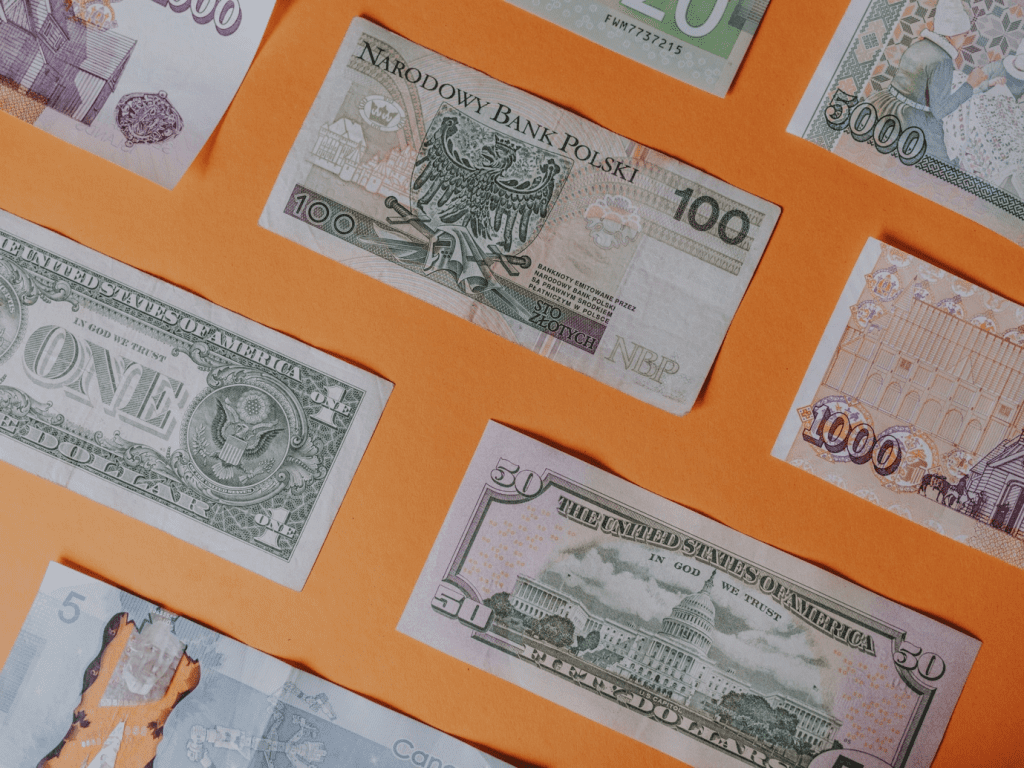Forex Carry Trade Explained: What is it and How Does it Work?
Central banks the world over set interest rates as part of their respective countries’ monetary policies. What this is meant to achieve is to determine, at least in part, the value of a currency. And although the value is achieved in concert with other economic and political factors, the interest rate directly plays a crucial role in increasing the demand for the currency as well as attracting foreign investment. One of the ways interest rates result in demand is through a popular investment strategy known as the carry trade.
In this forex carry trade explained article, we will mainly discuss the carry trade strategy from the context of forex trading, i.e., exchange of currencies. This is in keeping in mind that the strategy also applies to other markets. We will further explore instances when the forex carry strategy works, the different ways traders can use it, as well as its advantages and disadvantages.

What is Forex Carry Trade?
The carry trade strategy refers to the practice of capitalizing on the interest rate differential between two currencies. To understand exactly what this practically means, we’ll look at the strategy through the lens of its two versions/trade approaches. These include:
- The borrowing approach
- The forward premium version
But before detailing what these two versions entail, let’s discuss two types of the carry trade strategy:
- Positive carry
- Negative carry
The positive carry occurs when a trader profits from funding a high-yielding currency using a low-yielding currency. This is the most popular type.
On the other hand, the negative carry happens when the cost of holding a currency is greater than the profit/income generated throughout the holding period. Typically, the negative carry occurs when a trader borrows a high-interest-rate currency to buy a low-interest-rate currency. Based on this fact, this type is undesirable.
Borrowing Version
The world of foreign exchange capitalizes on profit-making opportunities, one of which lies in the differences between the interest rates of countries. At its core, this forex carry trade strategy version, which is the most commonly used, entails borrowing a currency with a relatively low-interest rate, also known as a low-yielding currency or funding currency, to buy a currency with a comparatively high-interest rate, also known as a high-yielding currency or target currency.
Notably, the central bank rates influence ordinary banks’ lending rates. In the United States, for example, the bank lending rate, also known as the prime rate, is often about 3% above the federal interest rate (funds rate). Currently, the bank lending rate is 3.25% per annum (the funds rate is 0.25%).
At the same time, Japan’s bank lending rate is 1.475% per annum, compared to a funds rate of -0.001%. (You can take a look at the funds rates of some of the world’s largest economies here). So, to execute a carry trade, the Yen would be the funding currency because it has a cheaper rate.
Mostly, however, traders using the currency carry strategy do not have to borrow money from banks. Instead, their brokers lend them the money in the desired currency. Under this arrangement, the broker is responsible for paying the accrued interests, as long as there is a positive carry.
But if there is a negative carry, then the broker will deduct an amount equivalent to the interest charged. If this is not possible, the trader’s position is closed out. Notably, brokers use the amount deducted from one trader with a negative carry to fund the interest payment of another trader whose investment has a positive carry.
Forward Premium Version
The forex carry trade strategy also takes another profit-making approach that does not directly rely on interest rates. Instead, this approach takes advantage of the forward premium of a currency with respect to another. The forward premium refers to the difference, in pips, between the future/forward exchange rates and the current (spot) exchange rates of the currencies.
Notably, the forward exchange rate between two currencies shows the amount of one currency to be delivered at a specific time in the future that can be purchased using one unit of the other currency. On the other hand, the spot exchange rate indicates immediate delivery.
The forward-premium route combines two transactions. First, a trader sells currency or currencies for which the future exchange rates are higher than the spot exchange rate, i.e., those that are at a forward premium. Second, the trader buys a currency or currencies whose forward exchange rate is lower than the spot exchange rate, i.e., those that are at a forward discount.
In this case, the former type of currencies – those with a forward premium – is the funding currencies. The latter is the target currency.
Notably, the forward premium approach is categorized as a carry trade strategy. This is based on the covered interest rate parity (CIRP) theory. The theory states that one currency’s forward premium relative to another’s is equal to the interest rate difference between them. According to scholars, this version is not profitable in theory, but it is in practice. More on that here.
Similarities of Borrowing and Forward Premium Versions
In both versions, one thing remains constant – the main intention behind executing a forex carry trade strategy remains the same. That is, to profit from the difference between the two interest rates. Regardless, our analysis will mainly focus on the borrowing version of the forex carry trade strategy.
How Forex Carry Trade Strategy Works
Traders can implement the currency carry trade in many ways. These include corporate bonds, government bonds, and bank deposits. And no, by this, we do not mean trading in other kinds of financial markets. Implementation, in this case, simply alludes to how you can generate profits by spending the borrowed low-interest-rate money on a high-interest-rate investment. Let’s look at it through the prism of bank deposits and sovereign bonds.
Bank deposit
You could initiate a currency carry trade by borrowing the Japanese Yen (JPY), say 1 million Yen, from a Japanese bank, which would charge you 1.475% per annum. You could then exchange this money for the South African rand (ZAR) and deposit it in a South African bank, which according to 2020 data, would offer a deposit rate of about 5%. This would result in a 3.525% positive carry.
In this case, the forex carry trade strategy can result in three distinct outcomes, depending on the direction the market moves:
- If the ZAR appreciates in comparison to the JPY over a given period, then you will receive profits due to the appreciation coupled with proceeds from the 3.525% interest rate differential
- If the ZAR depreciates relative to the JPY over a given period, then you will incur losses that may lead to the closure of the position
- If the value of the ZAR remains the same, then you will only receive proceeds relating to the 3.525% interest rate differential; you will not incur any losses or receive any profits
Sovereign bonds
A sovereign bond is a debt instrument that a national government issues to raise financing for its programs. By investing in a sovereign bond, you essentially lend to the government. Being a debt instrument, your investment in the bond attracts an interest.
For instance, the United States Treasury bond (T-bond) pays a 1.25% interest, though this figure varies over time. Currently, the interest rate, also known as the yield, is about 1.39% (as of December 6).
Emerging economies also offer sovereign bonds, which often have higher rates than the T-bonds. Usually, the bonds from emerging markets are denominated in US dollars and/or local currency.
At the intersection between the bond’s interest rate and the need to capitalize on the differences in rates, forex carry trade strategy enters the picture.
Let’s take the example of a 12-year emerging market’s bond issue denominated in US dollars and attracting a 6.3% annual yield. In this case, you could borrow funds, in Euros, from a Germany-based bank charging a 1.76% lending rate. You can then exchange the borrowed amount into US dollars and use the funds to invest in the emerging market’s bond.
Based on this scenario, the interest rate differential would be 4.54%. Suppose the USD appreciates relative to the EUR. In that case, your investment would generate income in the form of profits from the appreciation and proceeds from the interest rate differential. The other outcomes would be as described in the section above.
Advantages and Disadvantages of Forex Carry Trade Strategy
Advantages
The currency carry trade strategy offers several advantages. These include:
- The strategy enables you to earn interest on top of your trading gains, mainly if the target currency appreciates significantly relative to the funding currency
- FX carry trade allows you to introduce leverage into your trading and subsequently use it to your advantage. For example, suppose you wish to open a 5-mini-lot account with US$1,000 (in target currency) using a 50:1 leverage. In that case, the carry trade strategy guarantees that the broker will pay interest on the entire US$50,000, not the $1,000 you initially had.
- Carry trade boosts demand for high-interest rate instruments, such as bonds, which subsequently increase the demand for the denominating currency; the result is an appreciation of the target currency, meaning even more profits for you
Disadvantages
FX carry trade strategy also has several disadvantages unearthed via multiple studies. These include:
- Unstable currencies impact the strategy; this issue is further compounded by the uncertainty of exchange rates, which implies that the strategy is exposed to the volatility of the forex market
- The currency carry trade is exposed to risks of the bond and stock market, especially if traders use the target currency to invest in these instruments
- The FX carry trade strategy is extremely vulnerable to economic crises when investors’ risk appetite drops, resulting in the loss of value of the target currencies against the funding currencies. Simply put, the strategy demonstrates significant losses during turbulent times, akin to burning through your portfolio, literally.
Conclusion
As a forex trading strategy, the carry trade presents an opportunity for traders to generate moderately high returns during a period of economic boom. In fact, it enables traders and investors to earn from currency appreciations as well as interest payouts. This has made it a popular strategy in the forex markets. However, traders should keep in mind that it carries several risks. For instance, it results in substantial losses, particularly during economic crises.





